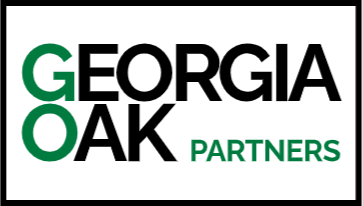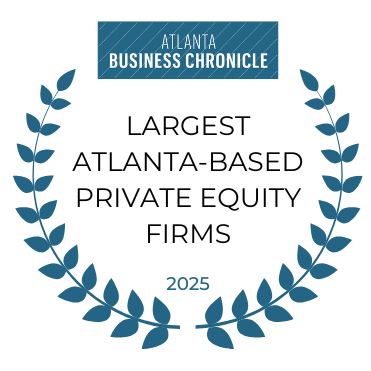Insights
NEWS FEATURES BY DATE
List of Services
-
11/2/2025 Connor Smith Joins Georgia Oak11/2/2025
-
10/31/2025 Septic Blue Acquires Advanced Septic10/31/2025
-
10/31/2025 Georgia Oak Invests in Atlanta Gear Works10/31/2025
-
9/10/2025 Septic Blue Acquires A-1 Septic Services9/10/2025
-
8/14/2025 T Management Acquires Life Point Dental Group8/14/2025
-
3/31/2025 Artisan Custom Closets Acquires Carolina Closets Plus3/31/2025
-
10/25/2024 Georgia Oak Invests in T Management10/25/2024
-
10/14/2024 Georgia Oak Promotes Corey Clemons to Vice President10/14/2024
-
5/30/2024 Growth Expert Jeff Tankersley Joins Septic Blue as CEO5/30/2024
-
4/22/2024 Artisan Custom Closets Expands Reach with Acquisition of Chattanooga Closet Company4/22/2024
-
1/11/2024 Georgia Oak Sponsors M&A South1/11/2024
-
11/29/2023 David Walker Joins Georgia Oak11/29/2023
-
11/15/2023 Georgia Oak Partners Announces Strategic Acquisition of Septic Blue11/15/2023
-
10/4/2023 Aditi Further Expands its Technology Solution Services by Acquiring Resolvit10/4/2023
-
9/21/2023 Atlanta Braves legend Dale Murphy joins Georgia Oak Partners as Managing Director9/21/2023
-
7/11/2023 Corey Clemons Joins Georgia Oak7/11/2023
-
6/5/2023 Artisan Custom Closets Acquires Spacemakers and Carolina Closets6/5/2023
-
5/22/2023 Home Improvement Expert Lindsay Tillie Joins Artisan Custom Closets as CEO5/22/2023
-
1/30/2023 Stacy Sutton Joins Georgia Oak1/30/2023
-
12/22/2022 Georgia Oak Partners Invests in Artisan Custom Closets12/22/2022
-
12/6/2022 Georgia Oak Partners Adds Emerald Transportation Solutions to its Portfolio12/6/2022
-
1/6/2022 Lars Heck Joins Georgia Oak Partners1/6/2022
-
3/18/2021 GA Governor Kemp Announces Sailfish Expansion3/18/2021
-
3/16/2021 Georgia Oak Partners Invests in Aditi Consulting3/16/2021
-
12/22/2020 Georgia Oak Partners: Our History, Your Future12/22/2020
-
2/19/2019 Forbes Features Farm Burger Invasive Species Sandwich Launch2/19/2019
-
12/11/2018 Former Back Yard Burgers CEO Joins Your Pie as COO12/11/2018
-
10/11/2018 Spectrum Staffing Named Finalist for Pinnacle Small Business Awards10/11/2018
-
9/19/2018 Farm Burger Honored on Good Good 100 Restaurants™ List9/19/2018
-
9/18/2018 Georgia Oak Partners Founder Named to 2018 40 Under Forty by Atlanta Business Chronicle9/18/2018
-
8/19/2018 Georgia Oak Partners Founder Named to 2018 40 Under Forty by Atlanta Business Chronicle8/19/2018
-
7/25/2018 Your Pie Celebrates 10 Years with Franchise Fest, Contest7/25/2018
-
7/13/2018 Your Pie Named to Restaurant Business "Future 50" List7/13/2018
-
6/29/2018 Georgia Oak Partners Founder Named to 2018 Emerging Leaders by The M&A Advisor6/29/2018
-
5/16/2018 Farm Burger Named a "Sizzling Better-Burger Concept to Watch" by QSR Magazine5/16/2018
-
4/17/2018 QSR Magazine: Your Pie Opens 5 Locations in First Quarter4/17/2018
-
3/30/2018 Spectrum Staffing Wins Movers & Makers MVP Award3/30/2018
-
2/12/2018 Farm Burger Named to QSR Magazine's 40 Under 40 Units List2/12/2018
Culture Shifts During COVID-19 and Beyond
By Camille Cantrell
Beyond Remote Work: COVID-19 Culture Challenges
Since the COVID-19 pandemic took hold in early 2020, much of our focus has necessarily been on logistics: the nuts and bolts of reorganizing the workplace. As companies scrambled to continue operations as safely as possible, health guidelines have changed the physical layout of offices and factories. For employees able to work remotely, technology issues, virtual schooling and scheduling challenges have littered our working days as we adjust to an ever-evolving new normal.
As time goes on, our focus has to shift to the long-term challenges of working in a COVID and even post-COVID world. The pandemic has precipitated changes in company culture, and today’s leaders are tasked with not only righting the ship, but also charting a sustainable long-term course.
Long-term Shifts and CEO Attitudes
A PwC survey of nearly 700 CEOs indicates that the majority believe operational changes spurred by COVID-19 are here to stay. These CEOs predict more remote collaboration (78%), automation (76%) and fewer employees in the office (61%), beyond the pandemic and into the future. More than half say their business will be more digital in the future.
These changes require leaders to do more than simply adapt their organization’s technology program and leave policies. For remote work to succeed, there must also be a cultural shift to foster trust, engagement and a focus on results. For many companies this means C-Suite leadership teams must adjust their approach.
In July, Siemens became the latest Fortune Global 500 powerhouse to announce a new remote work policy, allowing employees to work remotely in the location of their choice 2-3 days each week, permanently. CEO Roland Busch indicated the policy “will also be associated with a different leadership style, one that focuses on outcomes rather than on time spent at the office. We trust our employees and empower them to shape their work themselves so that they can achieve the best possible results.”
Pivoting Leadership Style in the New Paradigm
What does a change in leadership style look like? According to Sue Bingham in Harvard Business Review, leaders should focus on developing a mindset for complexity—which is unpredictable and requires flexible thinking—rather than for complication, which requires linear problem-solving. “Complexity conscious HR leaders view company performance as the result of open and clear communication, positive assumptions, and self-management.”
With a distributed workplace, leading across locations and time zones can be complicated, to say the least. It is particularly challenging for leaders who are new at the helm themselves, who may be trying to lead a group of people whom they’ve never met in person. For example, our portfolio company Sailfish Boats successfully transitioned in new CEO earlier this month, Rob Parmentier, who even dealt with a COVID-19 outbreak within the first two weeks of his tenure. Rob acted quickly and practiced CDC protocol to maintain safety throughout the manufacturing facility. He used CDC recommended contact tracing and the entire team was tested immediately. Within a day, the entire facility was disinfected, and test results began to come in.
Successful leaders foster inclusion, model flattening the hierarchy, and give employees more control over complex decisions. “Now is the time to focus on interpersonal relationships,” Bingham writes, “rather than control, standards, and hierarchy.”
Protecting Your Team Against Continued Risk
Until the pandemic recedes, obviously all leadership approaches must include considerations for employee health and safety. Page Siplon, CEO of a portfolio company of ours, TeamOne Logistics, says, “we consistently talk about maintaining social distance within the office and everyone’s commitment to stay home if they do not feel well.”
And as Parmentier learned quickly, it’s important to have a procedure in place
for when an employee tests positive for COVID-19. This plan should include steps for protecting the infected employee and their coworkers, collaborating with the CDC and local health authorities, determining appropriate closing, cleaning and disinfecting procedures, and acting in accordance with both the Family Medical Leave Act (FMLA) and the Americans with Disabilities Act (ADA).
Creating A Seamless Culture Across Locations
Intentional communication is more important than ever, and not just for handling crises or running effective meetings. Leaders should also create opportunities for employees to connect and contribute informally as well—a space to generate ideas and share concerns that may not fit neatly into the day’s agenda.
Page Siplon puts it this way: “I remind myself to speak with the intention of creating opportunities to listen…. When the pandemic arrived, my efforts to keep in touch with the team did not change but require more creativity sometimes.”
Once some staff return to the office, it will be even more critical to create time and space for all employees to be heard and acknowledged, regardless of their location. Leaders should make a concerted effort to include remote workers in recognition and staff development plans, to avoid falling prey to an “out of sight, out of mind” mentality.
Conclusion
Whether you are a new leader finding your bearings at a company, or a long-established captain of the ship, embracing a positive remote work culture is key to navigating today’s workplace environment. We recommend creating a culture of trust and open communication to get the best from your employees.
When in doubt? Focus on the positive. As Siplon says of his future-focused strategy, “sharing a bright spot in challenging times is a great way to strengthen everyone’s spirit.”
Resources & References
- CEOS: Post-COVID Changes are Permanent and There are More to Come: https://moderndiplomacy.eu/2020/08/14/ceos-post-covid-changes-are-permanent-and-there-are-more-to-come/
- Remote Work Best Practices: https://www.inc.com/justin-bariso/this-companys-new-2-sentence-remote-work-policy-is-best-ive-ever-heard.html
- Siemens Mobile Work Policy Announcement: https://press.siemens.com/global/en/pressrelease/siemens-establish-mobile-working-core-component-new-normal
- Leaders Adapting to Uncertain Times: https://hbr.org/2020/08/how-hr-leaders-can-adapt-to-uncertain-times
- 4 Ways to Inspire and Build Culture with Remote Workers: https://www.forbes.com/sites/jeffbevis/2020/08/19/4-ways-to-inspire-and-build-culture-with-remote-workers/#5f0228653795
- New CEOs and Assimilating: https://www.wsj.com/articles/congrats-on-your-new-ceo-job-maybe-one-day-youll-get-to-meet-your-employees-11596792611
- How to Respond if an Employee Tests Positive for COVID-19: https://www.cbia.com/resources/coronavirus/coronavirus-employer-guidance/respond-employee-tests-positive-covid-19/
- Sample Department of Health Employer Guidelines (VT): https://www.healthvermont.gov/sites/default/files/documents/pdf/COVID-19-What-employers-should-do-if-their-employee-tests-positive.pdf
At Georgia Oak, we’re committed to enhancing your business and helping founders grow their legacies
to their fullest potential. If you find we’re a good fit for your next step, please reach out to us.



